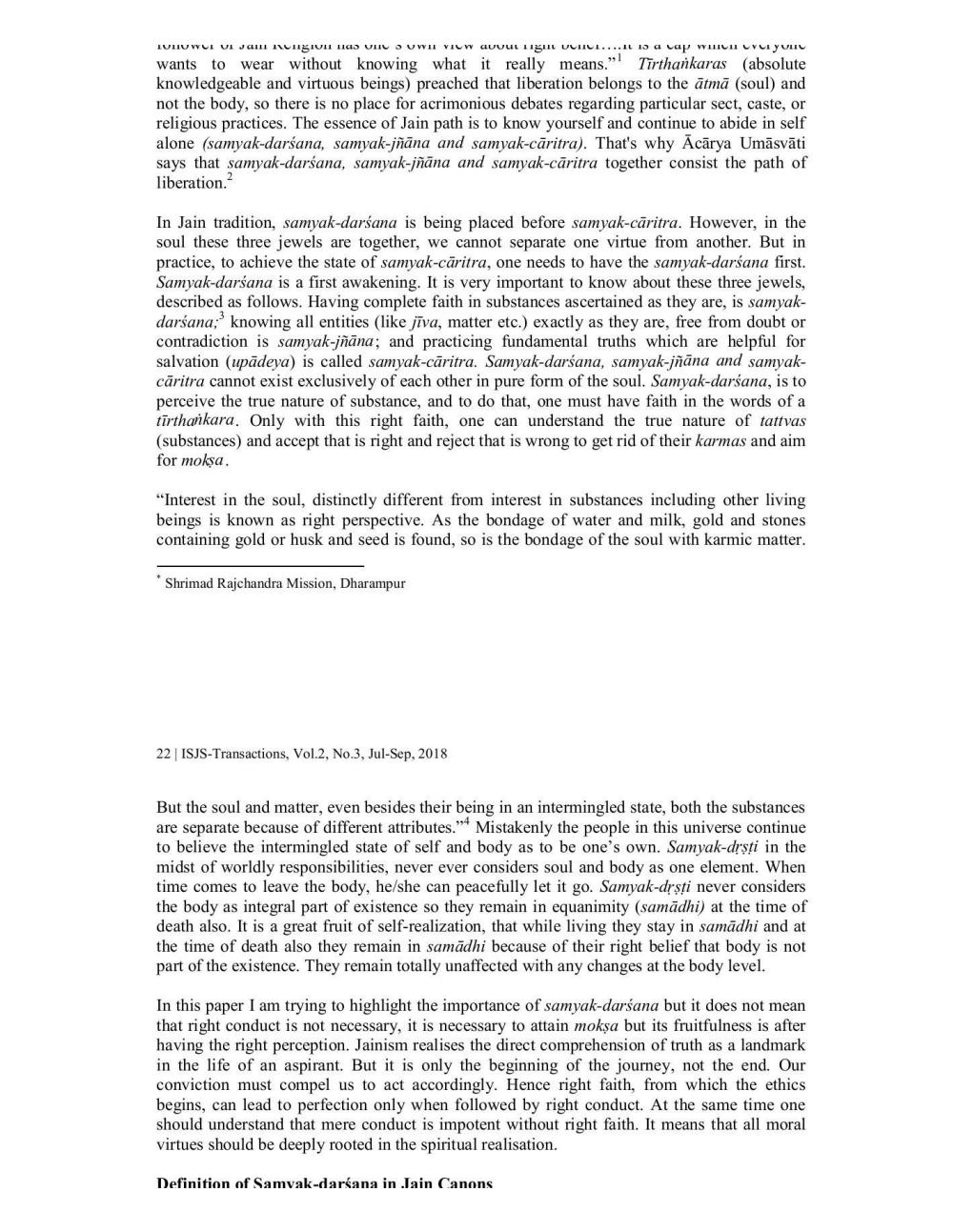________________
TURIU WUI VI JAM IUNGILI HAS HY O UWII VIU W avuut ligu VURUL.... IL 1a a cap wuICHIUVU YOLU wants to wear without knowing what it really means."! Tirtharkaras (absolute knowledgeable and virtuous beings) preached that liberation belongs to the ātmā (soul) and not the body, so there is no place for acrimonious debates regarding particular sect, caste, or religious practices. The essence of Jain path is to know yourself and continue to abide in self alone (samyak-darśana, samyak-jñāna and samyak-cāritra). That's why Acārya Umāsvāti says that samyak-darśana, samyak-jñāna and samyak-căritra together consist the path of liberation.
In Jain tradition, samyak-darsana is being placed before samyak-căritra. However, in the soul these three jewels are together, we cannot separate one virtue from another. But in practice, to achieve the state of samyak-cāritra, one needs to have the samyak-darśana first. Samyak-darsana is a first awakening. It is very important to know about these three jewels, described as follows. Having complete faith in substances ascertained as they are, is samyakdarśana, knowing all entities (like jīva, matter etc.) exactly as they are, free from doubt or contradiction is samyak-jñāna; and practicing fundamental truths which are helpful for salvation (upādeya) is called samyak-căritra. Samyak-darśana, samyak-jñāna and samyakcāritra cannot exist exclusively of each other in pure form of the soul. Samyak-darśana, is to perceive the true nature of substance, and to do that, one must have faith in the words of a tirtharkara. Only with this right faith, one can understand the true nature of tattvas (substances) and accept that is right and reject that is wrong to get rid of their karmas and aim for mokşa.
"Interest in the soul, distinctly different from interest in substances including other living beings is known as right perspective. As the bondage of water and milk, gold and stones containing gold or husk and seed is found, so is the bondage of the soul with karmic matter.
Shrimad Rajchandra Mission, Dharampur
22 ISJS-Transactions, Vol.2, No.3, Jul-Sep, 2018
But the soul and matter, even besides their being in an intermingled state, both the substances are separate because of different attributes."* Mistakenly the people in this universe continue to believe the intermingled state of self and body as to be one's own. Samyak-drsti in the midst of worldly responsibilities, never ever considers soul and body as one element. When time comes to leave the body, he/she can peacefully let it go. Samyak-drsti never considers the body as integral part of existence so they remain in equanimity (samadhi) at the time of death also. It is a great fruit of self-realization, that while living they stay in samādhi and at the time of death also they remain in samādhi because of their right belief that body is not part of the existence. They remain totally unaffected with any changes at the body level.
In this paper I am trying to highlight the importance of samyak-darsana but it does not mean that right conduct is not necessary, it is necessary to attain mokṣa but its fruitfulness is after having the right perception. Jainism realises the direct comprehension of truth as a landmark in the life of an aspirant. But it is only the beginning of the journey, not the end. Our conviction must compel us to act accordingly. Hence right faith, from which the ethics begins, can lead to perfection only when followed by right conduct. At the same time one should understand that mere conduct is impotent without right faith. It means that all moral virtues should be deeply rooted in the spiritual realisation.
Definition of Samvak-darśana in Jain Canons




